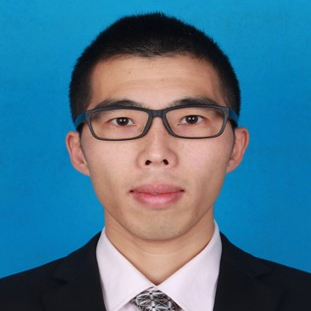Emerging Solutions for Active Water Governance: Intellectual Decision and Smart Control
A special issue of Water (ISSN 2073-4441). This special issue belongs to the section "Water Resources Management, Policy and Governance".
Deadline for manuscript submissions: closed (21 October 2022) | Viewed by 14106
Special Issue Editors
Interests: hydrology; water resources engineering; hydraulics; river dynamics; electrical engineering and automation
Special Issues, Collections and Topics in MDPI journals
Interests: earth and environmental science
Special Issues, Collections and Topics in MDPI journals
Interests: hydro-informatics; super computing; automation
Interests: disaster risk reduction; flood; river basin; hydropower plant; planning poverty; GIS
Special Issue Information
Dear Colleagues,
Water, as the source of all life, is essential to human life and production activities. Water governance refers to the regulation and allocation of water and water areas in nature through various measures, in order to develop, utilize and protect water resources while preventing floods and droughts for the needs of human survival and development. In primitive society, human beings did not have the ability to change the natural environment due to low productivity. People lived where water and grass were available, with hills to protect them from floods. Living by fishing, hunting, gathering, and nomadism, people could only seek benefits from natural water while avoiding hazards. Such passive adaptation is regarded as passive water governance. In slave society and feudal society, iron tools enabled people to develop agriculture on both sides of rivers, giving rise to villages and towns. Active water governance came into view to meet the needs of flood control, drainage, irrigation, shipping, and urban water supply.
Following the industrial revolution, the rapid development of production technology and economy in various countries was accompanied by the excessive exploitation or ineffective protection of natural resources in some places, which had caused bad results. In these areas, human activities have occupied an unduly high proportion in the water cycle, exceeding the carrying capacity of natural resources. This posed many new challenges to active water governance. Water shortage associated with water resources, water structures, and water quality existed to varying degrees among regions. Ecological problems also emerged in some regions, such as river and lake dry-up, wetland shrinkage, and land subsidence. In this period, new theories such as system theory, cybernetics, and information theory, and new information technologies such as microcomputers, remote sensing, and microwave communications came into being. In the 21st century, new smart and intelligent technologies have been applied to the development, utilization, protection, allocation, and dispatch of water resources, such as cloud computing, big data, Internet of Things, artificial intelligence, water models, and sensors. These theories and methods provide strong scientific and technological support for us to dig deep to pinpoint the root cause of water problems and take proactive, targeted, and pragmatic water governance strategies to completely solve water problems. At present, considerable progress has been made in the intensive and economical use and strict management of water resources, the optimal strategic pattern of water resources, and the protection and governance of rivers and lakes.
This Special Issue intends to present innovative applications of new methods and new technologies in the development, utilization, protection, allocation, and dispatch of water resources. Suitable research papers for this topic can include, but not be limited to, the following:
(1) Intellectual decision for active water governance
- Theory and practice in interconnected river (lake and reservoir) system network;
- Resilient urban water system construction and adaptive planning;
- Planning and layout of soil and water conservation and check dam system;
- Layout optimization of wired and wireless sensor nodes;
- Water conservancy big data, digital twin, and intelligent simulation;
- Dispatch decision theory, model, and empirical analysis.
(2) Smart control for active water governance
- Flow pattern analysis and hydraulic control of water delivery via channels and pipelines;
- Transition process analysis and transient flow control of pump station and units;
- Multi-dimensional safe scheduling and risk control of cascade hydropower stations and reservoir groups;
- Joint regulation and automatic control of sluice-dam-pump water quantity and water quality;
- Reservoir water-sediment joint optimized scheduling and artificial disturbance of water and sediment regulation.
(3) Development model, governance experience and policy implications
- Optimal allocation of water resources in river basins and regions with balanced time and space;
- Capacity configuration and scheduling of multi-energy complementary system of hydropower and wind and solar power;
- Industrial, agricultural and domestic water conservation and assessment of potential water savings;
- Water environmental protection and ecological restoration of river basins and regions (cities, irrigation areas);
- Virtual water, water rights, water market, and innovative management concepts.
Prof. Dr. Yizi Shang
Prof. Dr. Yongping Wei
Prof. Dr. Ling Shang
Prof. Dr. Akiyuki Kawasaki
Prof. Dr. Yuchuan Wang
Guest Editors
Manuscript Submission Information
Manuscripts should be submitted online at www.mdpi.com by registering and logging in to this website. Once you are registered, click here to go to the submission form. Manuscripts can be submitted until the deadline. All submissions that pass pre-check are peer-reviewed. Accepted papers will be published continuously in the journal (as soon as accepted) and will be listed together on the special issue website. Research articles, review articles as well as short communications are invited. For planned papers, a title and short abstract (about 100 words) can be sent to the Editorial Office for announcement on this website.
Submitted manuscripts should not have been published previously, nor be under consideration for publication elsewhere (except conference proceedings papers). All manuscripts are thoroughly refereed through a single-blind peer-review process. A guide for authors and other relevant information for submission of manuscripts is available on the Instructions for Authors page. Water is an international peer-reviewed open access semimonthly journal published by MDPI.
Please visit the Instructions for Authors page before submitting a manuscript. The Article Processing Charge (APC) for publication in this open access journal is 2600 CHF (Swiss Francs). Submitted papers should be well formatted and use good English. Authors may use MDPI's English editing service prior to publication or during author revisions.
Keywords
- water resources planning and management
- smart water grid
- water transfer project
- dynamic monitoring system
- intellectual decision
- smart flow control
- gates
- pumping stations
- reserviors
- water ecology and water enviroment
- water saving









